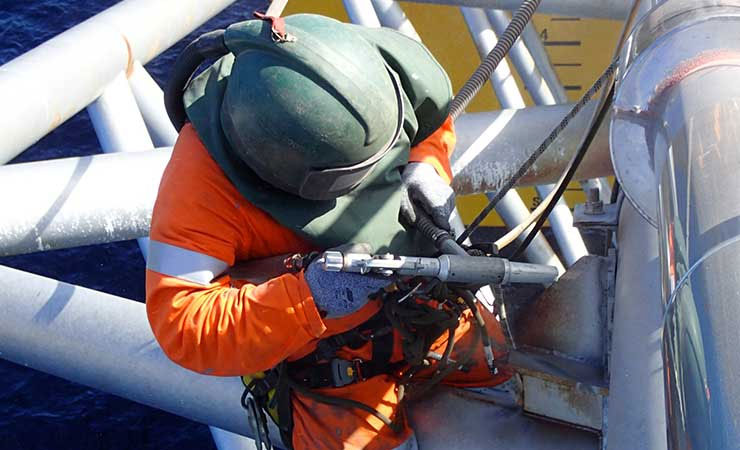Blasting Painting

Blasting
What Is Grit Blasting?
The definition of Shot Blasting and similar media blasting services is rapidly impacting the surface of an object with a controlled stream of abrasive shot terial to prepare the surface to meet specifications. When Shot Blast is delivered by a rapidly rotating wheel, the process is also often described as wheelabration services. Shot Media is propelled onto the surface to clean or otherwise prepare it. The wheelabrator Shot Blast Process is particularly effective for flash removal. Some companies use Shot Blasting for construction surface preparation, such as final finishing of concrete and other types of flooring, but Saran does not provide those services.
Painting
Paint consists of resin, pigments, solvents and additives. They may be divided into types in several different ways. Generally, paints are classified depending on their resin, or in which way the resin dries. The resin has the most important influence on the properties of the paint. In this chapter the different types of paint based on their types of resin are described.
1. Categorisation of paints Paints can be divided into physically drying and chemically drying paints, depending on the way their resin hardens. The way in which the paint dries has an effect on their overcoating and maintenance painting. Chemically curing paints usually have a limited overcoating time, after which the surface has to be roughened in order to give good adhesion. Overcoating of physically drying paints does not generally require special attention. Nowadays, paints are also often divided into waterborne and solvent-borne paints.
2. Physically drying paintsThe paint film of physically drying paints is formed when the solvents evaporate and the molecules of the resin coalesce to form a film. The drying is dependant on how fast the solvents evaporate and the coating thickness. These types of coatings will dissolve in their original solvents and soften at higher temperatures. Similarly, water-borne paints dry physically when the water and trace solvents evaporate. However, water-borne coatings do not dissolve in water after they have dried. Physically drying paints include chlorinated rubber, vinyl and acrylic paints. 8.1.2 Chemically drying paints The paint film of chemically curing paints is formed in a chemical reaction where the liquid resin, consisting of small molecules, cures to form larger molecules. If the paint contains solvents or water, the drying begins with the evaporation of these volatile components. The cured film is not thermoplastic. Neither does the film dissolve in solvents, but if the grade of curing is low, the coating may expand under the influence of solvents.ww Chemically curing paints can also be divided as below: paints which dry by oxidation cure by reaction with oxygen in the air (e.g. alkyd paints). paints which are moisture curing dry by reaction with humidity in the air (e.g. moisture cured urethanes and ethyl silicate paints). Two component paints, where the components react with each other (e.g. epoxy and polyurethane paints). stoving enamels, where the components react with each other under the influence of high temperature.

